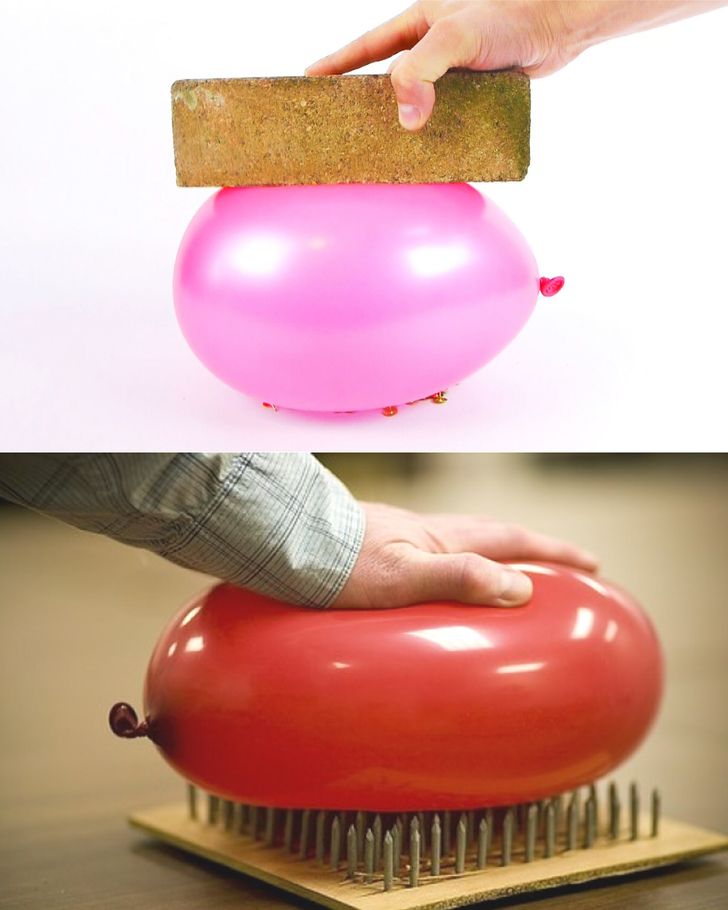hi
11 Awesome Science Experiments You Need to Show Your Kids
There are certain simple experiments which really impress children. They might not entirely understand the explanation which lies behind them, but they’ll remember them for their whole life, and they could very well help them understand something in science class when the time comes.
We compiled 11 of the most interesting experiments which are guaranteed to impress your kids and friends. Everything you need for them can be found at home.
Pencil trick
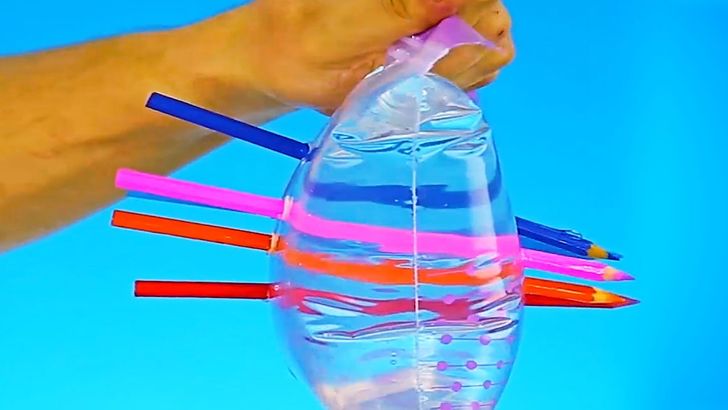
You need: A polyethylene bag, some ordinary pencils, water.
The experiment: Fill about half the polyethylene with water. Pierce the bag using the pencils in the places where it’s filled with water.
Explanation: If you pierce the bag with the pencils and only then pour in the water, it will seep out through the holes you’ve made. But if you fill it first and then insert the pencils, the water will not seep out at all. This is a result of the fact that when the polyethylene is broken apart it’s molecules move closer together. In this case, the polyethylene tightens around the pencils.
Uninflated balloon
You need: 2 balloons, a handful of pins (or a bed of nails).
The experiment: If you take an inflated balloon and put it on just one pin or nail — as expected, it’ll pop. However, if you take a handful of pins and lay them out flat and then take another balloon trying to do the same thing again, this time you can push the balloon down onto the pins and it won’t burst. A bed of nails can substitute the pins. You can even put a brick on the balloon (but do not to push too hard).
If you try this experiment, please, be careful, you may want to consider wearing safety gloves and eye protection.
Explanation: When you increase the number of pins you push into the balloon you reduce the pressure on each pin and hence the balloon doesn’t pop.
Colourful cabbage
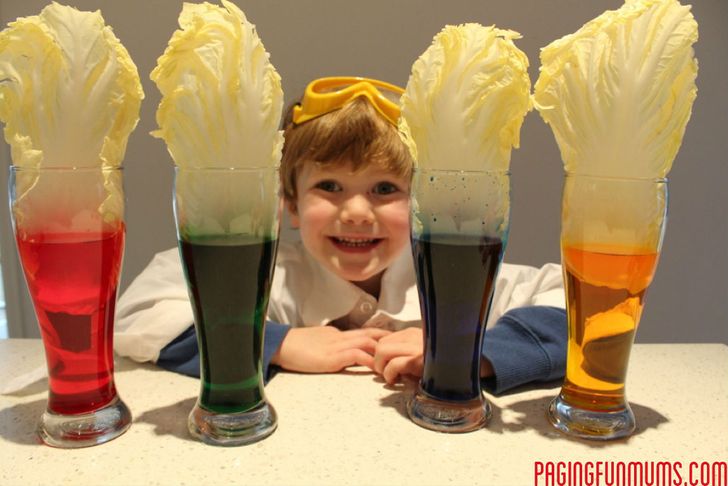
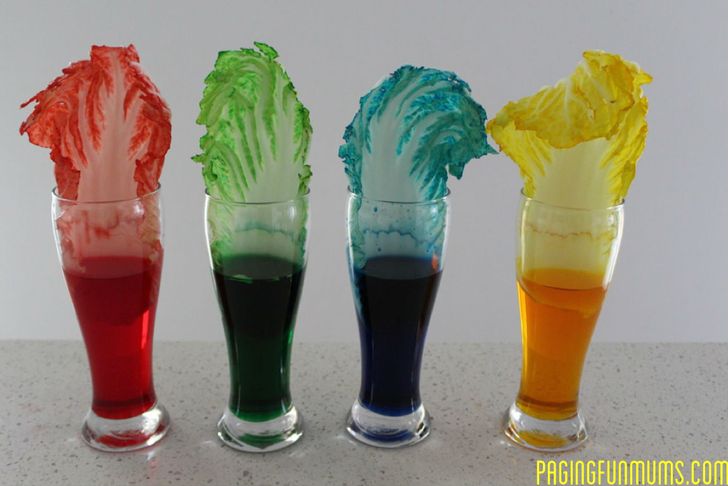
You need: 4 glasses with water in them, food colouring, some cabbage leaves.
The experiment: Add different coloured food colouring to each glass of water, then place a single cabbage leaf in them. Leave them overnight. In the morning the leaves will have changed colour.
Explanation: Because plants absorb water, their leaves also absorb the colour of that water. This is known as the capillary effect, whereby the water will pass into the tiniest tubules of the plant. This happens with flowers, grass and even trees.
Fireproof balloon
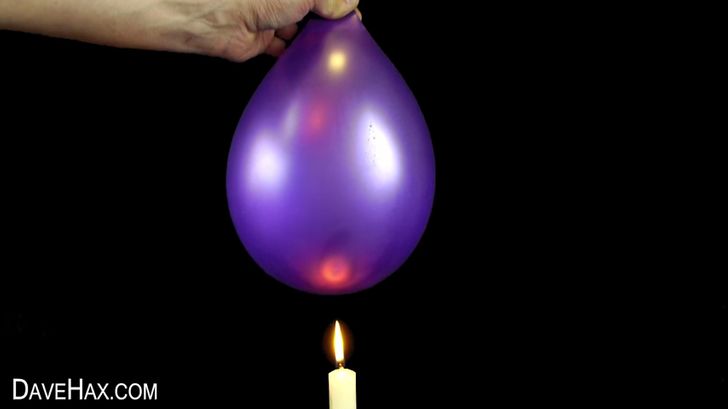
You need: 2 balloons, a candle, matches, water.
The experiment: Fill the first balloon with air and hold it over a lit candle to demonstrate to the kids that the flame will cause it to burst. Then fill the second balloon with tap water, light the candle and hold the balloon over it once again. You’ll see that in this case the balloon can withstand the heat of the flame.
Explanation: The water in the balloon absorbs the heat given out by the candle, so the material of the balloon itself doesn’t burn and then burst.
Floating egg
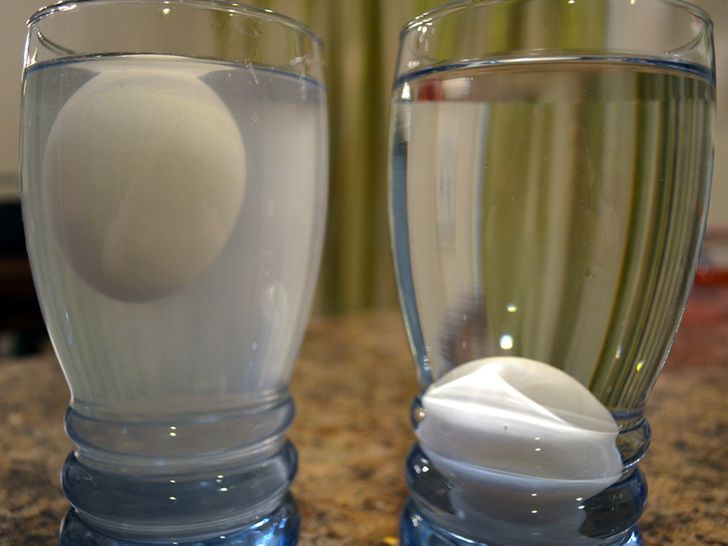
You need: 2 eggs, 2 glasses of water, some salt.
The experiment: Carefuly place an egg in a glass of ordinary pure water. Provided the egg hasn’t gone off, it should fall to the bottom of the glass. Then pour some hot water into the second glass and dissolve 4-5 tablespoons of salt in it. It will work better if you wait until the water then cools down. Then drop the second egg in it. It will float on the surface rather thank sink to the bottom.
Explanation: The key here is the density of the molecules making up both the egg and the water. The average density of an egg is much greater than that of pure water, so it’s pulled downwards. The density of the salt mixture is higher than that of the egg, so the latter can’t fall to the bottom.
Striking a match with a rubber band
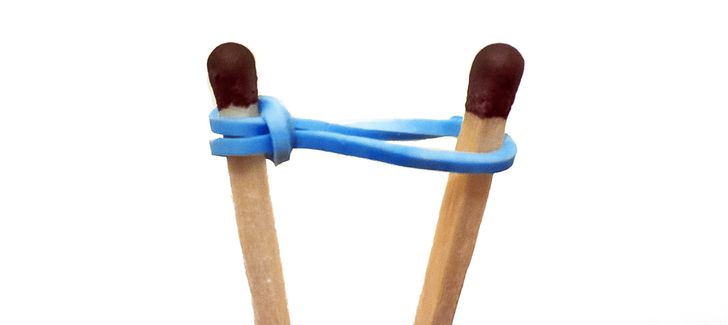
You need: Two matches, a rubber band
The experiment: Wrap a rubber band around two matches, knotted around one and slipped over the other. Lay the first match on its side, pull it back and stretch the rubber band. Hold the other match in the vertical position with your other hand. When you let go of the rubber band, the match flies like an arrow and strikes the one you’re holding.
Explanation: The match ignites when you apply pressure to the striking match, rubbing the phosphorus coating with the band.
Your own avocado tree
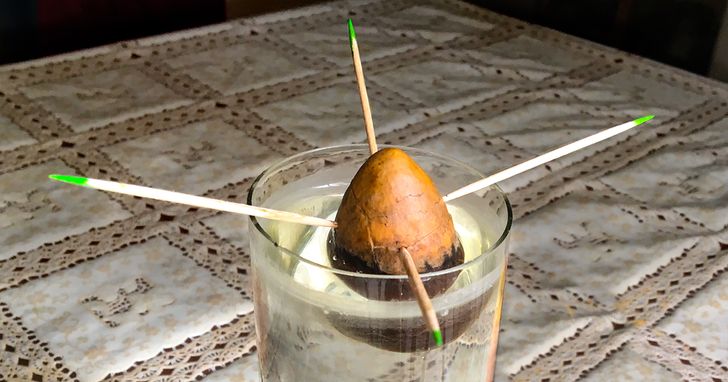
You need: an avocado pit, 4 toothpicks, a glass of water.
The experiment: clean the pit of a fresh and ripe avocado, press the toothpicks into the pit around the middle, and balance it on a glass of water the pointy side up. The bottom of the pit should sit in the water. Let it rest like this for a couple of weeks, keeping it at room temperature and refilling the water as needed. Soon the pit will sprout roots and then eventually crack in half with a sprout coming out from the top. Once it sprouts, you can place it in a more comfortable pot to grow.
Explanation: the toothpicks allow the pit to balance, obviously, without the bottom touching the glass, which would otherwise prevent roots from growing normally. And all the rest is just the force of nature!
Crystallised candy
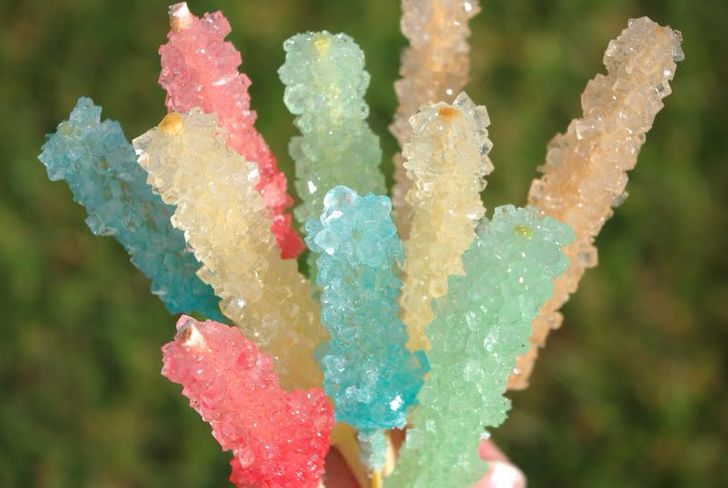
You need: 2 glasses of water, 5 glasses of sugar, small wooden kebab sticks, some thick paper, some clear glasses, a saucepan, food colouring.
The experiment: Make some sugar syrup by adding a couple of teaspoons of ordinary sugar to a quarter glass of water. Sprinkle a piece of paper with some sugar. Dip the kebab sticks in the mixture, stirring them so that pieces of sugar start to stick to them. Make sure the mixture is spread evenly along the stick, then lay them out on the paper.
Leave the sticks to dry out overnight. In the morning, dissolve five glasses of sugar in two glasses of water in a heated saucepan. Leave the resulting syrup to cool down for 15 minutes, although not for too long as otherwise the crystals won’t form. Then pour it into some empty jars and add food colouring in different colours. Place the now-ready kebab sticks in the jars, but make sure they touch neither walls or bottom — use a clothes peg to do this.
Now wait and observe what happens.
Explanation: The solubility of the syrup-water declines as its temperature falls, which produces a sediment of sugar grains on the sticks.
A lit match
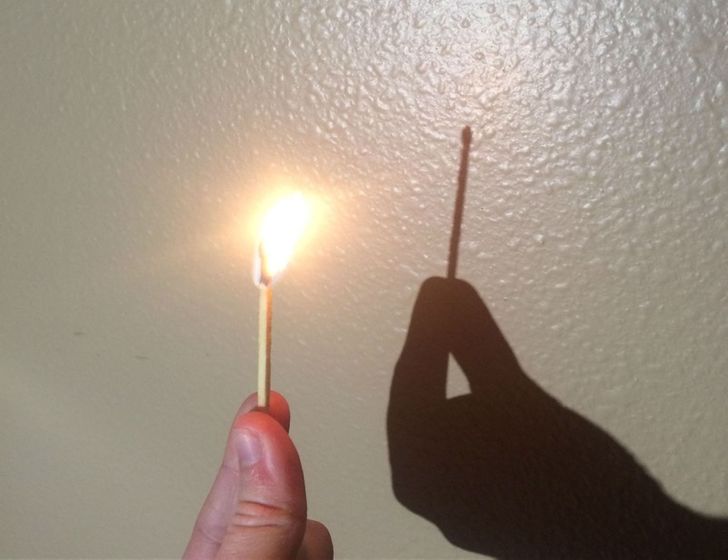
You need: Some matches, a torch.
The experiment: Light a match and hold it about 10-15 centimetres away from the wall. Shine a torch over your hand holding the match. You’ll notice that only the shadow of your hand and the matchstick itself will appear on the wall — the flame will not appear.
Explanation: Fire does not produce a shadown, because it doesn’t impede the passage of light through itself in the same way that physical materials do.
Levitate a dollar bill
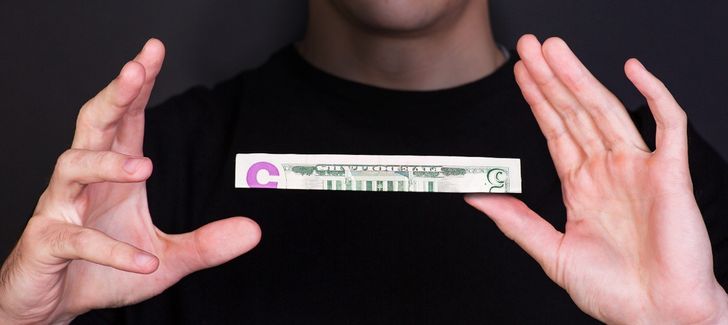
With this video, you can learn how to perform the floating money trick. It’s very easy to do, and it will impress your kids — no magic, just physics!
Comments
Related Reads
12 Unexpected but Fantastic Uses for Toothpaste You Never Knew Existed
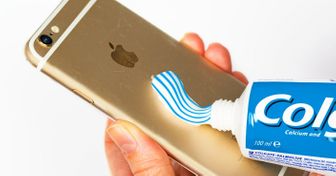
“Screams Desperation,” Nicole Kidman, 56, Stuns in a Risqué Dress, But People Say It’s Not Age-Appropriate

Zac Efron’s Appearance a Few Days Ago Leaves Fans Shocked and Worried

Miley Cyrus Causes a Stir by “Leaving Nothing to the Imagination” as She Wears an Extremely Revealing Dress

Model Lost Entire Lips in Pitbull Attack, And She Reflects on Her Recovering Journey

A Woman Used Botox Because She Wanted to Look Like Her Younger Self, and According to People Online She Succeeded

«You Ain’t Got the Body to Pull It Off», Stunning Selena Gomez Deemed Too Big For Her Tight Dress

Tearful Ariana Grande Admitted She Had “a TON of Filler and Botox” Over the Years and Explained Why She Stopped

What the Animals From Animated Movies Would Look Like If They Were People
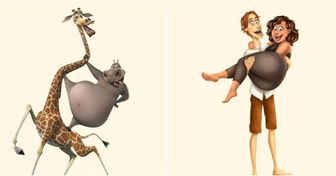
Tom Cruise Deemed Unrecognizable in New Pics With Prince William, as Some Say He Had “Too Much Surgery”

Jennifer Lopez Faces Backlash as Users Notice Something Unusual in Her Bikini Pics

A Girl Born Without Nose, Who Was Called “Voldemort”, Proved Everyone Is Beautiful in Their Own Way

